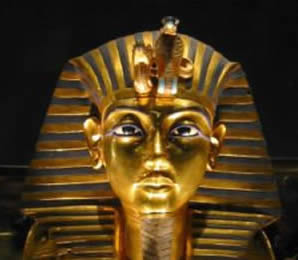Metallic bonding
Metals have very unique properties. They are strong and usually melt at very high temperatures. Of course the exception to this is mercury which is a liquid at room temperature. Metals :
- are good conductors of electricity and heat;
- can be polished and are very reflective;
- are malleable, that is, they can be beaten into different shapes;
- can be drawn into a wire, hence we call them ductile.
in order to understand why metals have such properties it is important to see the atomic structure of a typical metal.
Ancient civilisations originally had uses for only a few properties of metals. The fact that metals are able to be polished and form shiny ornaments may have influenced their early uses. Gold is a soft, rare metal that is found in its pure form in the ground. Once found, it is relatively easy to process into jewelry as evident by its early use.
Ancient weapon makers looked to metals for their hardness and malleability. Precious metals, such as gold, are too soft to be useful as a structural materials or in the manufacture of weapons. However, these shiny metals were highly valued. Early civilisation soon realised the beneficial changes in metal properties derived from mixing different elements with a metal to form alloys.


The electrons that flow through the lattice are known as delocalised electrons. The positive ions are held together by the electrostatic attraction between them and the negative sea of electrons. The force of attraction acts in all directions and can be very strong.
This model of metallic bonding is able to explain most of the properties of metals such as:
- high boiling temperatures due to the strong forces of attraction the positive ions and the delocalised electrons;
- electrical conductivity in both the solid and liquid states due to the delocalised electrons;
- malleability due to electrostatic force of attraction acting in all directions;
- ductility, again due to strong forces of attraction;
- heat conductivity due to delocalised electrons;
- ability to be polished, lustrous, due to the reflection of light by the delocalised electrons;
.
- high density due to the close packing of positive ions.
However there are some properties that this, somewhat simple, model can not explain. They are:
- the range of densities observed in different metals:
- the range of melting temperatures;
- differences in electrical conductivity between metals;
- magnetic nature of some metals.
Consider the glass of mercury shown on the right, source Google. Mercury is a liquid at room temperature and dense enough to enable a billiard ball to float on its surface.
